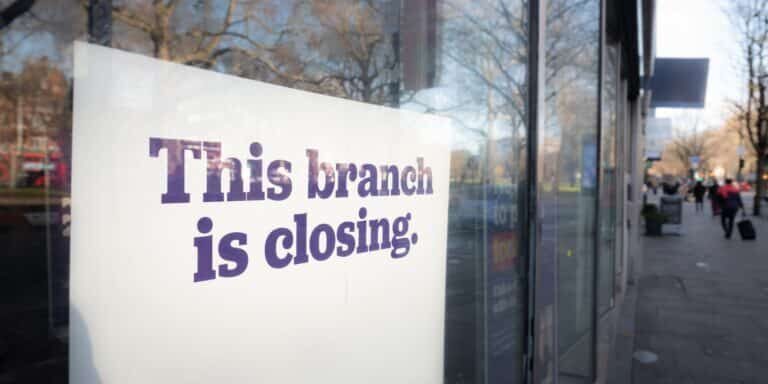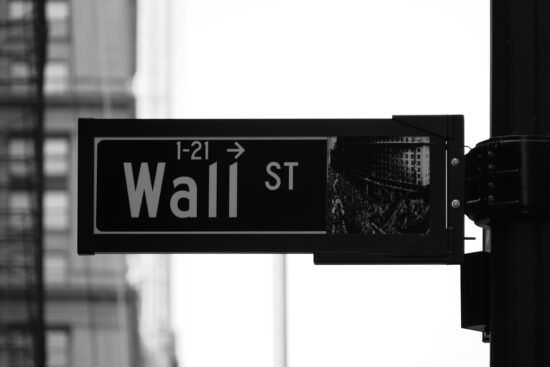
The Alarming State of America's Regional Banking System
“There will be bank failures.”
That was Federal Reserve Chair Jerome Powell’s grim warning delivered to the Senate Banking Committee in early March. It’s a danger, he said, that will face smaller and medium-sized banks for years to come as the effects of high interest rates and commercial real estate troubles continue to weigh on the banking industry.
Less than two months after Powell’s caution, the U.S. had its first bank failure of 2024.
Philadelphia-based Republic First Bank was shuttered last week by the Pennsylvania Department of Banking and Securities. All of the lender’s locations — which sprawled across the northeast United States— reopened last Saturday as branches of Fulton Bank, which scooped up almost all of Republic First Bank’s deposits and assets.
The comparatively small lender had approximately $6 billion in total assets and $4 billion in total deposits by the end of January. The FDIC estimates that the cost to its Deposit Insurance Fund related to Republic First Bank’s failure will be $667 million.
While it was a small and relatively isolated blip, and the bank had faced years of ongoing problems, it’s just one glimpse into how higher-for-longer interest rates are continuing to ripple through the already-downbeat banking sector.
Some of the themes seen in Republic First Bank’s demise, like profitability issues linked to rising funding costs and the effect of large quantities of fixed-rate assets, continue to pressure smaller banks across the board, said Megan Fox, a vice president at Moody’s.
“Those challenges remain in the industry and are part of the drivers of our overall negative outlook,” she said.
Moody’s has a negative outlook on the U.S. banking industry for 2024. Fitch gave the sector a deteriorating outlook, expecting a “moderate amount” of bank failures over the course of the year.
“I would say the general feeling is tenuous stabilization,” said Michael Reynolds, vice president of investment strategy at Glenmede. He said Republic First Bank’s failure doesn’t move “the needle all too much.”
The National Bureau of Economic Research estimated in a report published last December that as many as 385 American banks, many of them smaller, regional institutions, could be at risk of failure this year.
“There’s a certain level that is fairly normal, especially where concentrations exist heavily,” said Brian Thies, director of Fitch Ratings’ financial institutions group. “And I think that’s probably the biggest red flag — banks with heavy concentrations in a single business line.”
In the span of three months early last year, three midsize banks with more than $200 billion in assets each all collapsed: Silicon Valley Bank, Signature Bank, and First Republic Bank (the latter not to be confused with Republic First Bank, which collapsed last week). The string of bank failures came after a somewhat quiet two-year period with no banking failures.
Last year’s regional banking crisis — which created ripple effects throughout the banking sector, including more than $20 billion in charges to big banks related to the FDIC’s special assessment — also sparked fears of a contagion akin to the 2008 financial crisis.
Despite those concerns, there were very few major material aftershocks. Two more small banks — Kansas-based Heartland Tri-State Bank and Iowa-based Citizens Bank — shuttered last year and were scooped up by competing local lenders. But all seemed, and remained, relatively calm.
Powell said last June that the string of bank runs and failures “were painful reminders that we cannot predict all of the stresses that will inevitably come with time and chance.” He underscored that “the system was able to withstand recent shocks” because of regulatory and legislative efforts and the globally interconnected financial system.
Interest rates, CRE, and NII
One of the biggest pieces of the regional banking puzzle is the commercial real estate (CRE) sector.
The Federal Reserve began its quantitative tightening campaign to bring down inflation in March 2022, raising interest rates to between 5.25% and 5.5%. The Fed has kept rates steady at this 23-year-high for the last few months as it weighs potential cuts.
But with inflation popping back up to 3.5% in March, there’s increasing uncertainty around when the central bank will cut rates, and how many times it will do so. (The Fed is aiming for an annual inflation target of 2%.)
John Buran, CEO of Flushing Financial, a New York-based commercial bank with $8.5 billion in total assets, said that small and midsize banks face balancing act between pulling back on their expenses in the high rate environment while preparing for upcoming interest rate cuts.
“I think it just still is an uncertain environment,” Buran said. “Well-capitalized institutions like ours will get through it and we’ll be in a better place as the sun starts shining a little bit more and things look more positive in the economic environment.”
Until then, however, the effects of these delays and unknowns are two-fold.
High interest rates mean investors will have a hard time refinancing their CRE loans, about 40% of which will reach maturity between 2023 and 2025, according to the National Bureau of Economic Research. This, paired with lower property values and weak post-pandemic demand for office spaces, could lead more firms to default on their loans in the next few years.
That’s a major risk factor for regional banks, which hold close to 40% of $6 trillion in CRE debt and many of which have “sizable” CRE concentrations, Moody’s Fox said.
Some regional banks are looking to reduce some of this concentration in the CRE industry amid concerns. Troubled New York Community Bank, for example, promised to reduce its exposure to the sector after it took considerable provisions for potential bad loans in the fourth quarter of 2023.
The second effect of interest rates is on net interest income (NII) — the difference between how much interest banks earn on loans and investments, and how much they pay out to depositors. Banks — from giants like JPMorgan Chase to regionals — are projecting a fall in NII this year as a result of higher-for-longer rates, after reaping significant windfalls last year. When this number goes into the red, banks are technically insolvent. And if consumers get nervous and rush to withdraw their deposits, that could cause a bank failure.
Regional banks are likely to take the biggest hits to NII if rates stay higher for an extended period of time, Theresa Paiz-Fredel, a senior director at Fitch Ratings, said in a note last month. Smaller institutions could face declines as a result of higher funding costs or changes in deposit mix and pricing, she said.
“Ultimately, it’s going to depend on that interest rate path,” Fox said. “And because there’s enough uncertainty around that, it’s hard to predict.”
This article originally appeared on Quartz
sign up for the newsletter
By signing up, you agree to our Privacy Policy and Terms of Use, and agree to receive content that may sometimes include advertisements. You may opt out at any time.












